Our paper conservator recently restored a pair of Chinese panels. The illustrations featured a busy scene of everyday life at a grand house and the countryside beyond. This article will share the rich history of these beautiful works on paper as well as exploring their delicate restoration process.
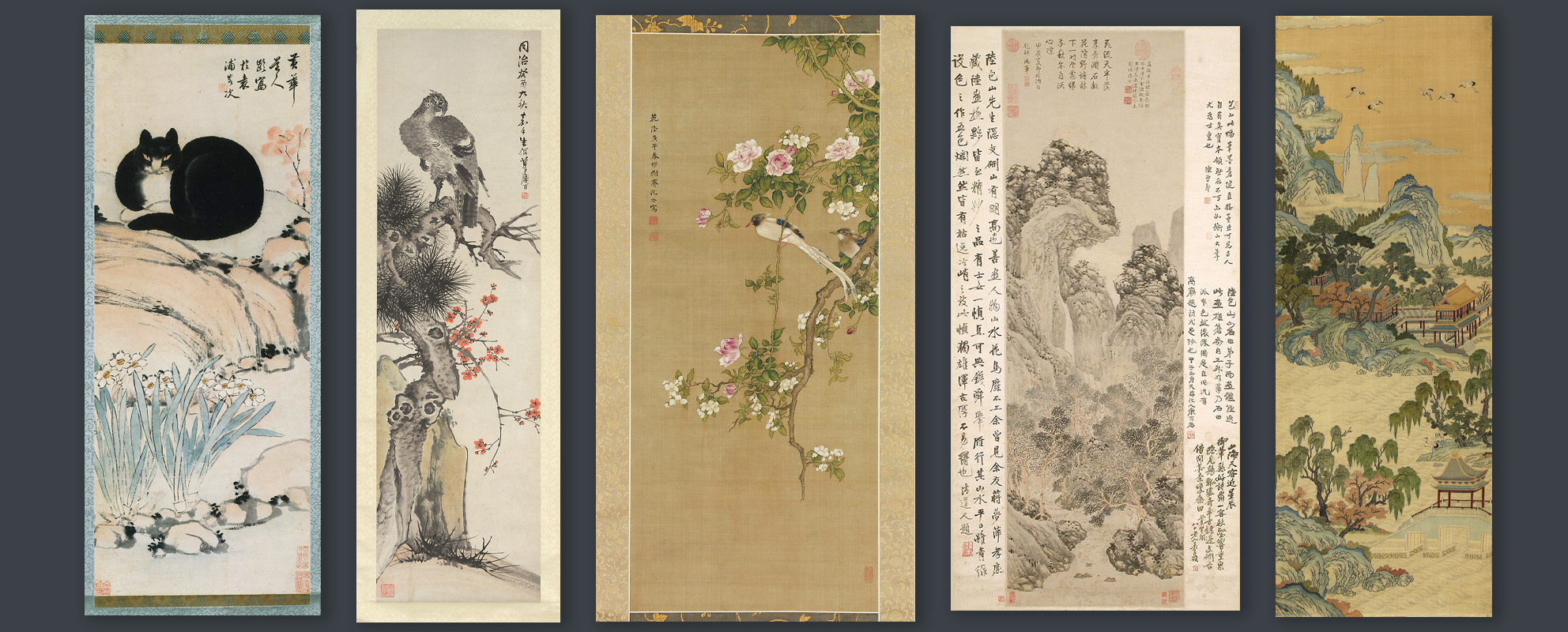
What is Chinese panel art?
The history of paper itself has ties to ancient China, where the first ‘true’ process of papermaking began. This dates back to the Eastern Han period, it was not until the 11th century that paper was brought to Europe. Asian panel art is unique in its detailed and divided format, often close to the typical illustration style and formats found upon the folding screens and hanging scrolls of traditional interior design. To understand the artistic style of Chinese panel designs, it is helpful to look at the history of these important decorative features.
 Above: a detail from a scroll depicting the Kangxi Emperor’s Southern Inspection Tour, 1698
Above: a detail from a scroll depicting the Kangxi Emperor’s Southern Inspection Tour, 1698
Folding screens are an influential and iconic part of Asian interior design. Their concealing and partitioning effect has influenced various scenes in literature and paintings, with the artwork that resides upon their panels playing a central part of the living space they inhabit.
 Above: a detail from a panel depicting the portrait of a husband and wife, late 18th / early 19th century
Above: a detail from a panel depicting the portrait of a husband and wife, late 18th / early 19th century
The origin of interior screening dates back to the Zhou period (771–256 BCE) in China, where they were just one panel. The folding screens we know today became popular during the Han Dynasty (206 BCE – 220). Whilst grand designs would have originally been designed for the palaces of imperial rulers and their families, they would eventually find space in the homes of merchants and a rising middle class during later centuries. Screens were also used as diplomatic gifts between neighbouring countries in the region.
 Above: a detail from a hanging scroll panel by Tang Guang depicting lotus flowers, Qing dynasty
Above: a detail from a hanging scroll panel by Tang Guang depicting lotus flowers, Qing dynasty
Chinese wall scrolls are also influential and have their own studious technique and traditional mounting arrangements. These date from the same era as folding screens in the Han Dynasty and have several formats to look out for. Firstly, there are large hall hangings, which are a centrepiece to an entrance space. Panoramic screens, with a continuous pattern in numerous panels. A group of four scrolls, which have connected themes across each panel such as the four seasons. Thin scrolls for more intimate spaces. And lastly, a couplet, this is two scrolls which often feature poetry or a linked theme.
 Above: panoramic panels depicting a mythical landscape, 19th century
Above: panoramic panels depicting a mythical landscape, 19th century
The division of the artwork on folding screens and wall hangings can be transformed into individual artworks for home decoration. The framing and display of individual sheets in a couplet (2 panels), triptych (3 panels) or polyptych (many panels) may include artwork that has been taken from an antique panel or wall hanging, or from artwork that was specifically commissioned for the purpose.
 Above: panoramic panels depicting a celebratory scene, 17th century
Above: panoramic panels depicting a celebratory scene, 17th century
Panels of this kind are most often on paper and can be mounted in the same way as a watercolour or text document. Properly framing Chinese panels is important, as improper materials might lead to decay from acidic glues and boards. Once displayed, their unique appearance is a popular way to bring bold art into an area and give the design a spatially dynamic appeal.
 Above: a detail from a Chinese scroll painting of a crane by Chen Zhaofeng, late 19th century
Above: a detail from a Chinese scroll painting of a crane by Chen Zhaofeng, late 19th century
The global influence of Chinese designs
Across centuries, new routes for global trade allowed the cultural influence of Chinese art to inspire distant continents, inspiring the European interpretation known as ‘Chinoiserie’ by the 17th century.
 Above: a detail from a French Chinoiserie print on textile, 1786
Above: a detail from a French Chinoiserie print on textile, 1786
Royalty across Europe implemented this design in their fashion and interiors. Fitting perfectly alongside the Rococo trend for pastoral scenes in the 18th century, the themes found in artworks, ceramics, furniture and screens also idealised a tranquil countryside life.
 Above: a detail from a painting by Jean François de Troy with Chinoiserie wallpaper in the background, 1724
Above: a detail from a painting by Jean François de Troy with Chinoiserie wallpaper in the background, 1724
A second rise in Chinoiserie began in the late 1950s and boomed in the 1960s with a focus on a simplistic, modern style that merged with traditional themes. Today, we may find many pieces of traditional Asian origin or influence in homes and important buildings across the world.
 Above: a Chinese design produced for the French market, 18th century
Above: a Chinese design produced for the French market, 18th century
Can you restore Chinese panel art?
Chinese panel art can be restored in the same way as other works on paper. Some pieces may be more complex than others, depending on their history and areas of damage. When our team was contacted about a pair of Chinese panels they were delighted to be of assistance to these beautiful and complex artworks.
 Above: a detail from a Qing dynasty panel
Above: a detail from a Qing dynasty panel
Once the panels had been collected by our art handler and brought to the studio, our paper conservator conducted a full examination. This assessment found that they had been mounted onto wallpaper and old backing boards which had led to areas of deterioration. The paper had become unstable and in need of conservation treatment to help it survive. The works had been displayed in the stairway of our client’s home with a fair amount of sunlight exposure, which had led to some discolouration and fading.
 Above: this wallpaper panel had been covered in darkened varnish before it was removed by our conservators
Above: this wallpaper panel had been covered in darkened varnish before it was removed by our conservators
Our paper conservator began treatment by removing the old wallpaper and backing materials, before placing the paper in a custom solution to clean it of any contamination. This means that the paper was gently floated in a bath with a specialist solution, tested for the particular needs of the material. The softening of the old adhesives allows for their careful removal and the solution prevents any acidic or dangerous particles from clinging onto the surface of the paper.
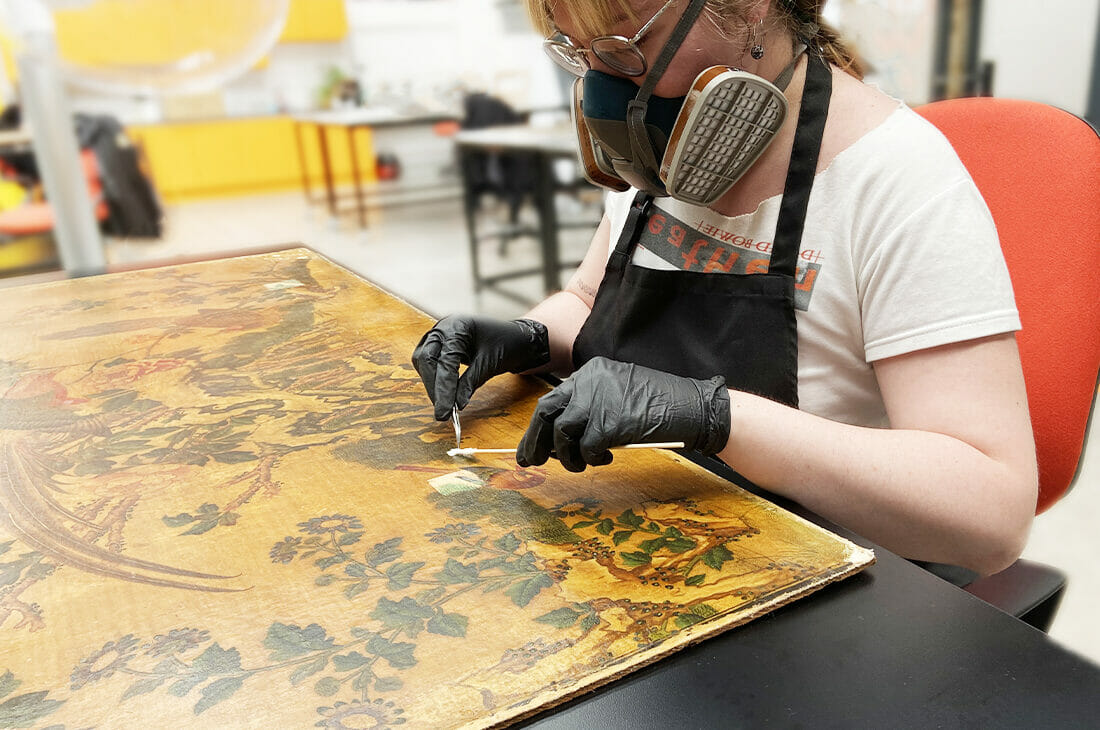
To give stability back to the panels, they are then lined onto Japanese tissue paper. This variety of tissue is used as it is thin and non-acidic, whilst also providing significant strength. Any areas of lost or broken paper can be carefully re-adhered or patched for further consolidation.

Our conservator is able to use artistic talent to retouch small areas of missing paint. This will always be done sympathetically, with the least possible intervention. The areas are retouched with watercolour after the panel has been flattened, reducing any dents or areas of folding.
Chinese panels should be framed similarly to other works on paper, with acid-free materials and UV protective glazing options to prevent any fading. For their display, a shaded area is advised and average levels of temperature (20°C) and humidity (45%) will help to create a safe environment. If you have Chinese panels in need of protective framing, our team will always be happy to help.
It is important to have works on paper, such as Chinese panels, assessed for restoration, especially if they show discolouration or deterioration. If there is no intervention, the later cost of restoration will be higher due to further complex needs. Deteriorating paper with no conservation treatment at all could be left at high risk of irreversible losses and eventual decay.
If you have an item that you are interested in being restored or require advice about please contact our team.

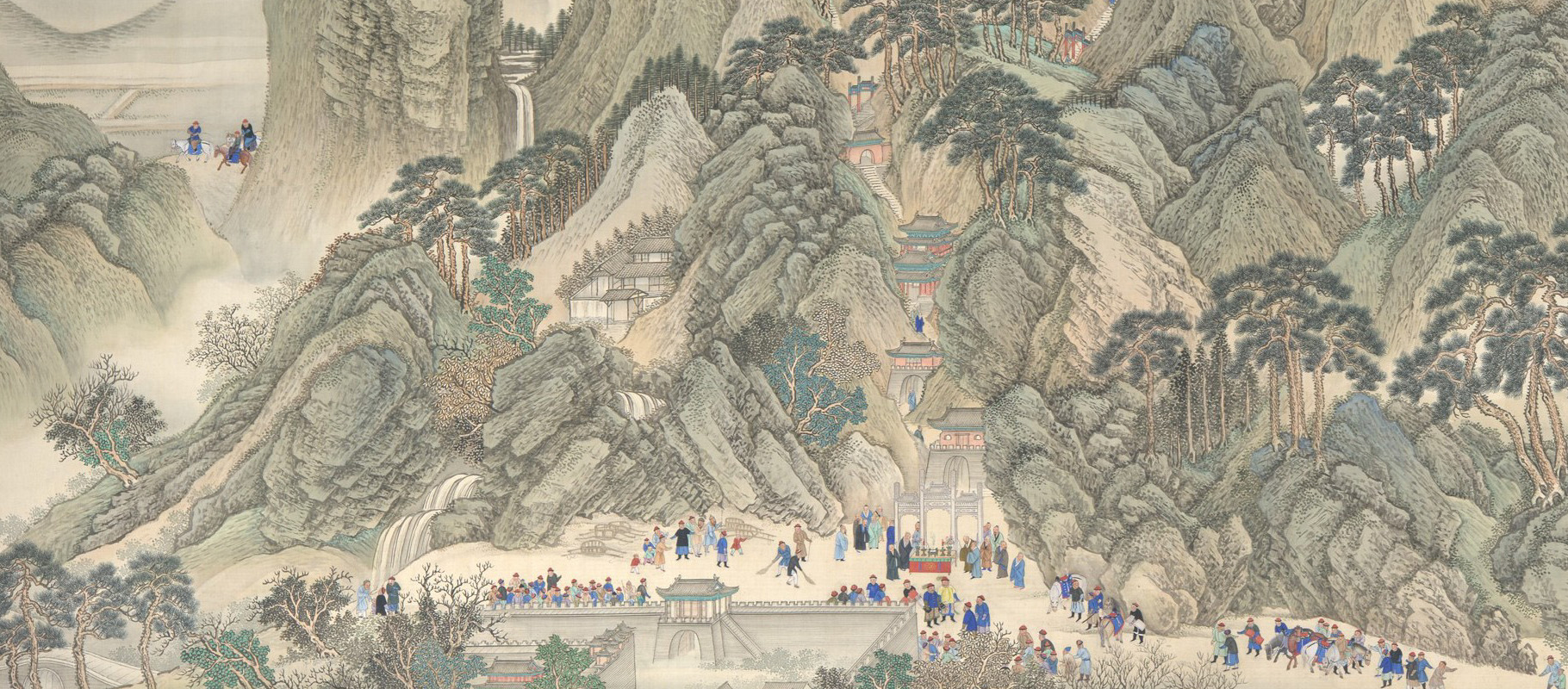 Above: a detail from a scroll depicting the Kangxi Emperor’s Southern Inspection Tour, 1698
Above: a detail from a scroll depicting the Kangxi Emperor’s Southern Inspection Tour, 1698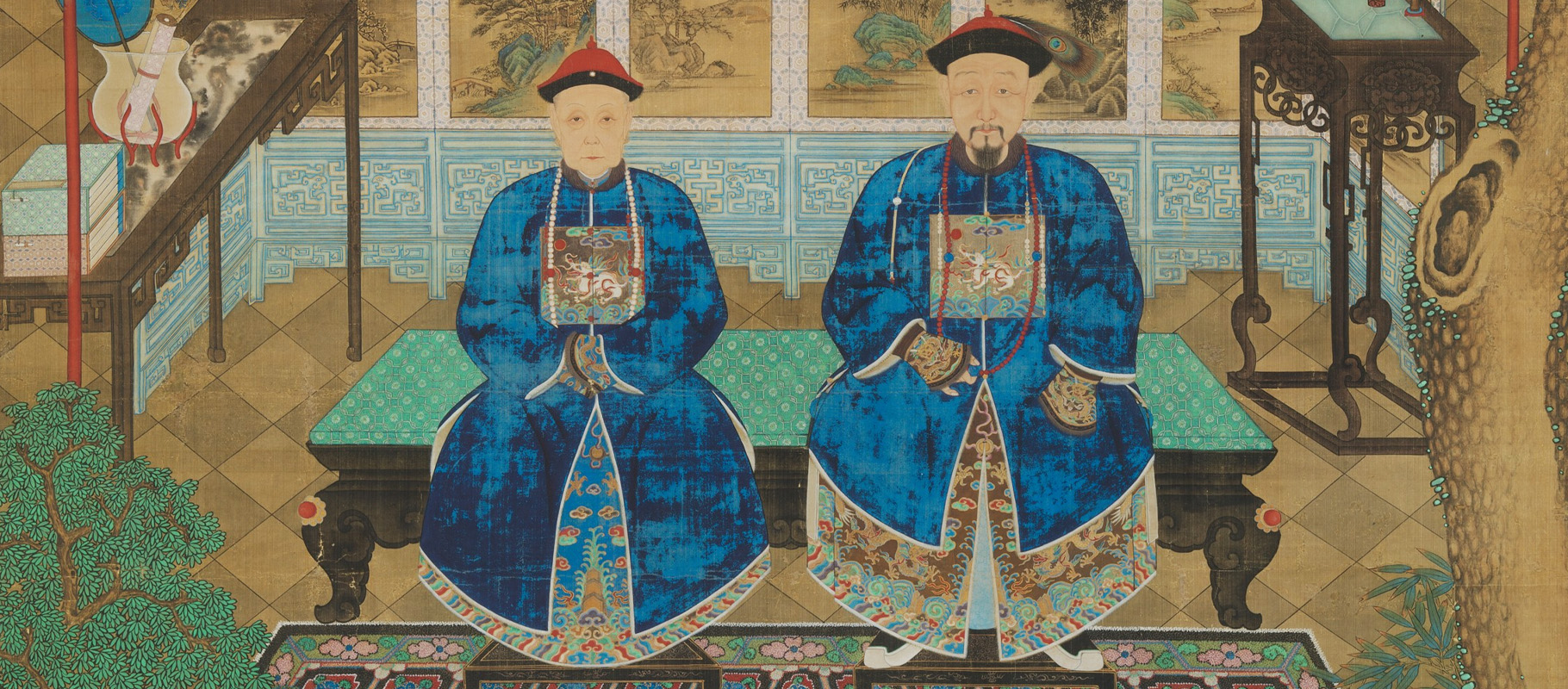 Above: a detail from a panel depicting the portrait of a husband and wife, late 18th / early 19th century
Above: a detail from a panel depicting the portrait of a husband and wife, late 18th / early 19th century Above: a detail from a hanging scroll panel by Tang Guang depicting lotus flowers, Qing dynasty
Above: a detail from a hanging scroll panel by Tang Guang depicting lotus flowers, Qing dynasty 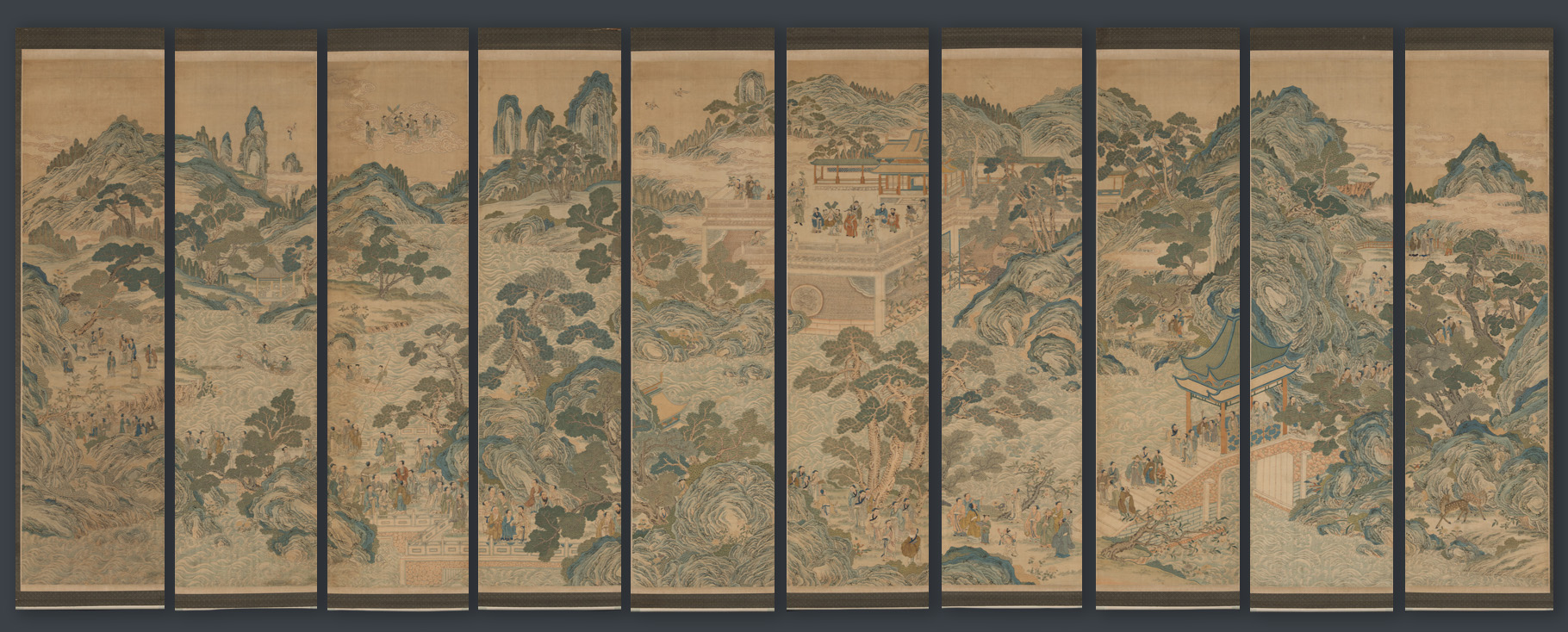 Above: panoramic panels depicting a mythical landscape, 19th century
Above: panoramic panels depicting a mythical landscape, 19th century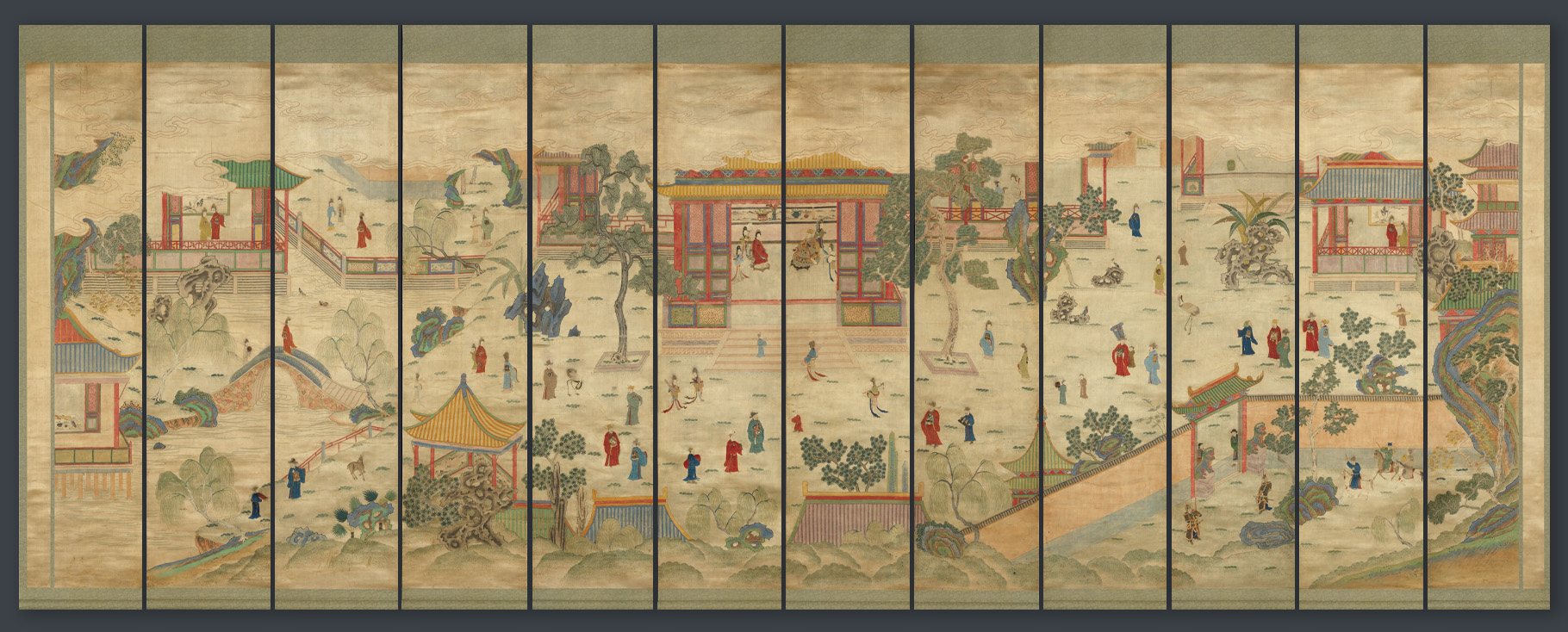 Above: panoramic panels depicting a celebratory scene, 17th century
Above: panoramic panels depicting a celebratory scene, 17th century Above: a detail from a Chinese scroll painting of a crane by Chen Zhaofeng, late 19th century
Above: a detail from a Chinese scroll painting of a crane by Chen Zhaofeng, late 19th century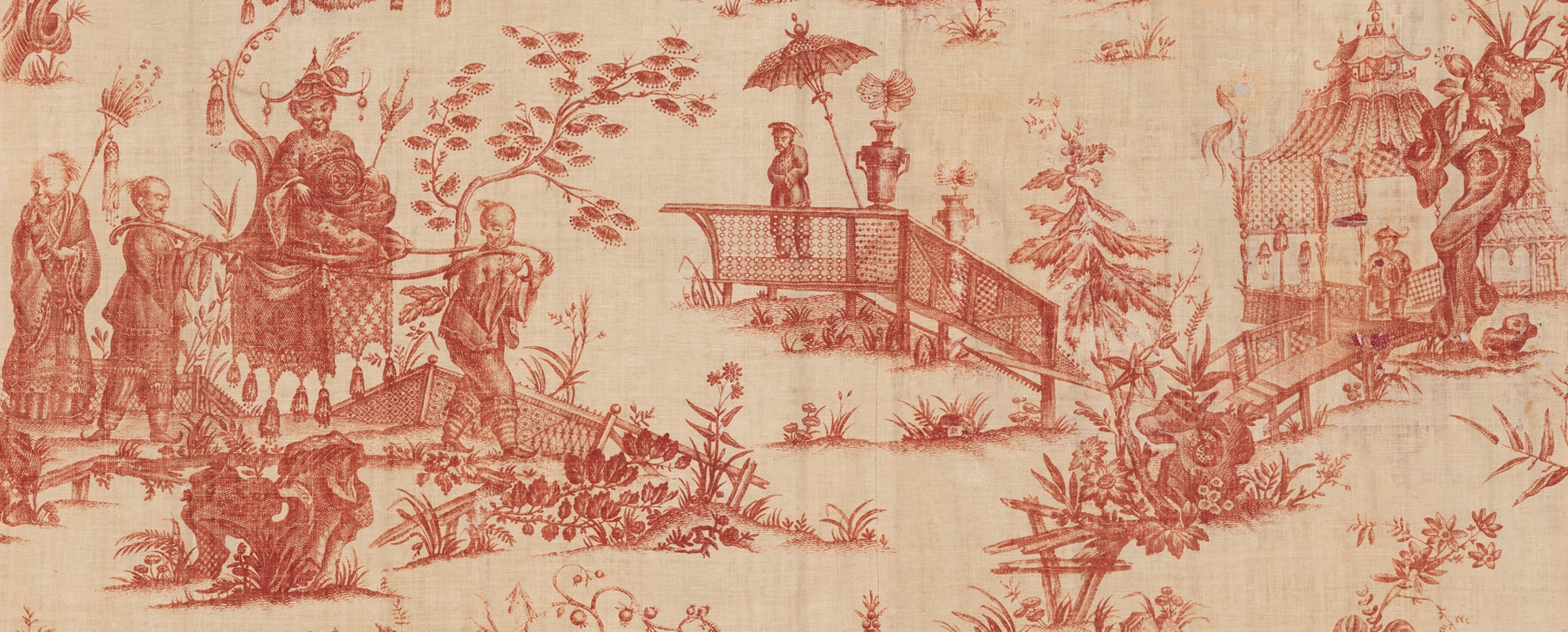 Above: a detail from a French Chinoiserie print on textile, 1786
Above: a detail from a French Chinoiserie print on textile, 1786 Above: a detail from a painting by Jean François de Troy with Chinoiserie wallpaper in the background, 1724
Above: a detail from a painting by Jean François de Troy with Chinoiserie wallpaper in the background, 1724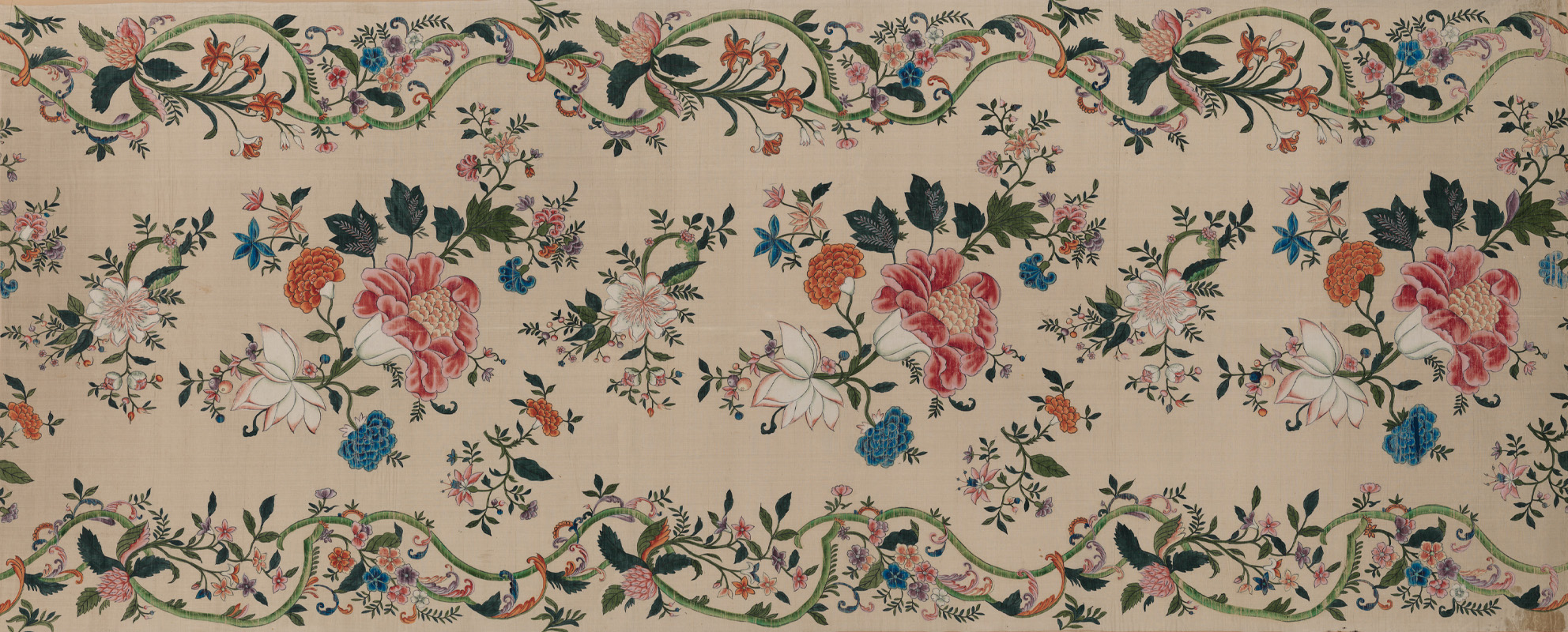 Above: a Chinese design produced for the French market, 18th century
Above: a Chinese design produced for the French market, 18th century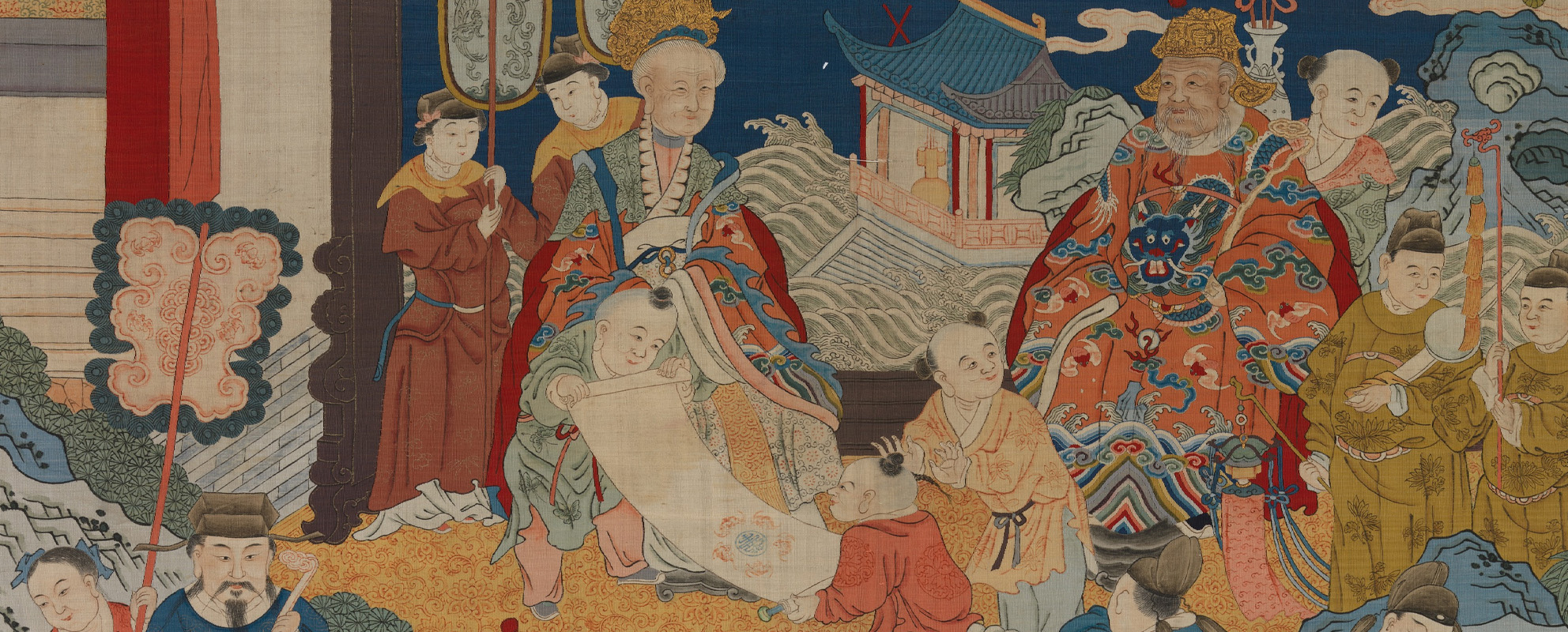 Above: a detail from a Qing dynasty panel
Above: a detail from a Qing dynasty panel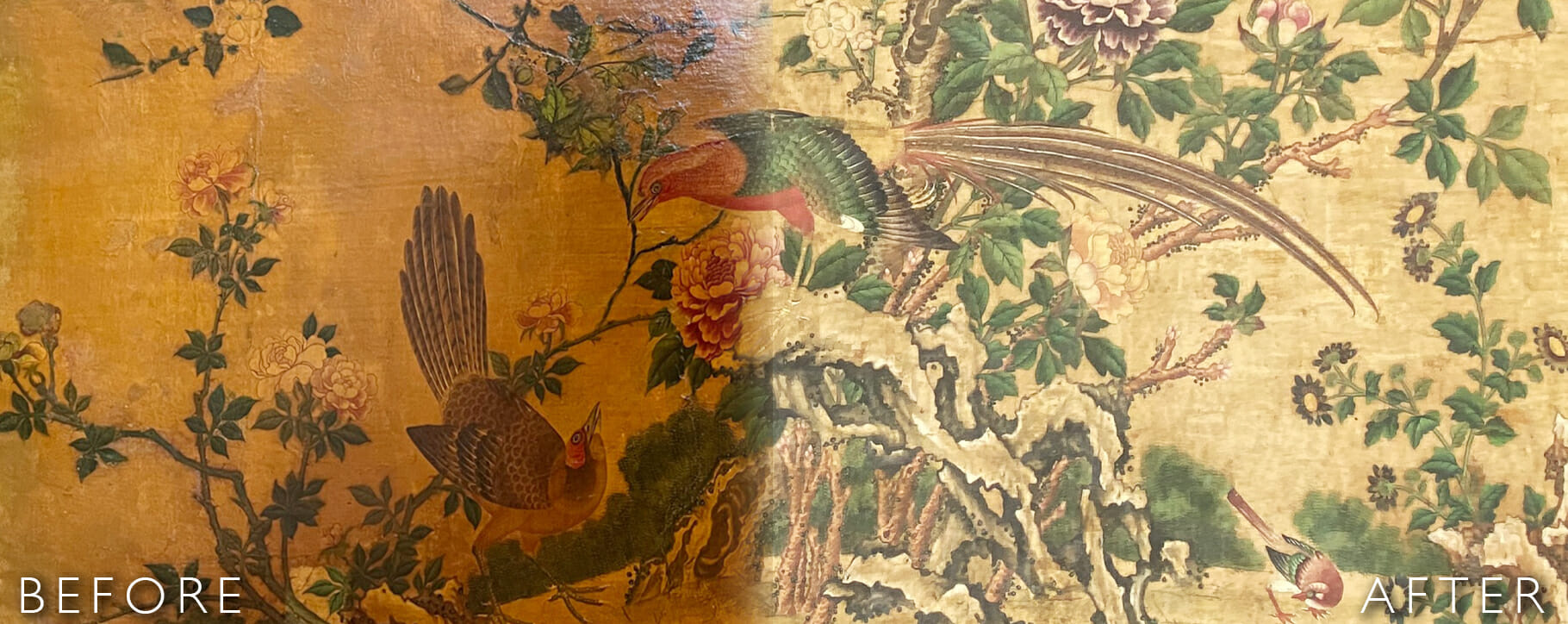 Above: this wallpaper panel had been covered in darkened varnish before it was removed by our conservators
Above: this wallpaper panel had been covered in darkened varnish before it was removed by our conservators




